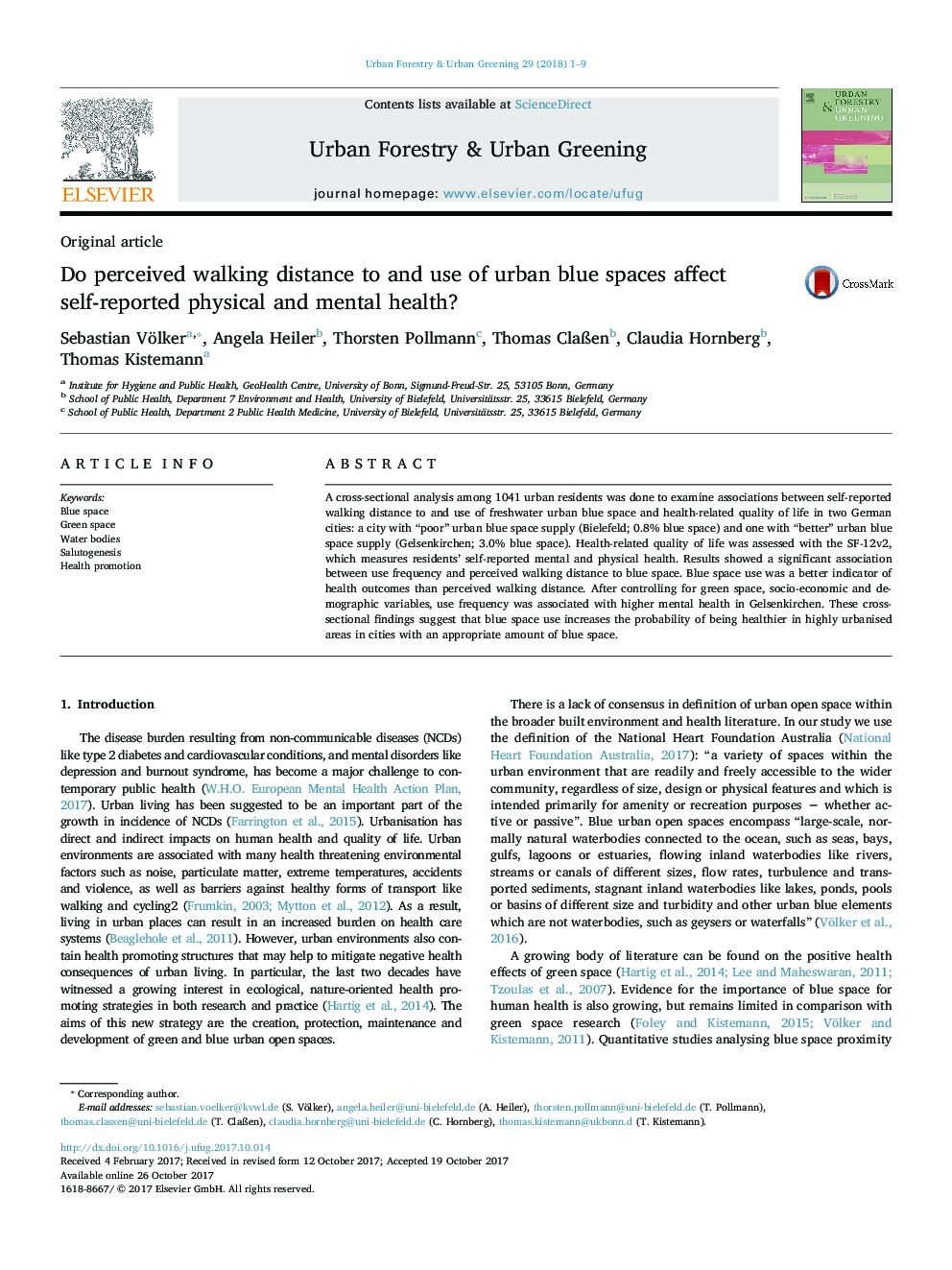| Article ID | Journal | Published Year | Pages | File Type |
|---|---|---|---|---|
| 6549370 | Urban Forestry & Urban Greening | 2018 | 9 Pages |
Abstract
A cross-sectional analysis among 1041 urban residents was done to examine associations between self-reported walking distance to and use of freshwater urban blue space and health-related quality of life in two German cities: a city with “poor” urban blue space supply (Bielefeld; 0.8% blue space) and one with “better” urban blue space supply (Gelsenkirchen; 3.0% blue space). Health-related quality of life was assessed with the SF-12v2, which measures residents' self-reported mental and physical health. Results showed a significant association between use frequency and perceived walking distance to blue space. Blue space use was a better indicator of health outcomes than perceived walking distance. After controlling for green space, socio-economic and demographic variables, use frequency was associated with higher mental health in Gelsenkirchen. These cross-sectional findings suggest that blue space use increases the probability of being healthier in highly urbanised areas in cities with an appropriate amount of blue space.
Related Topics
Life Sciences
Agricultural and Biological Sciences
Forestry
Authors
Sebastian Völker, Angela Heiler, Thorsten Pollmann, Thomas ClaÃen, Claudia Hornberg, Thomas Kistemann,
